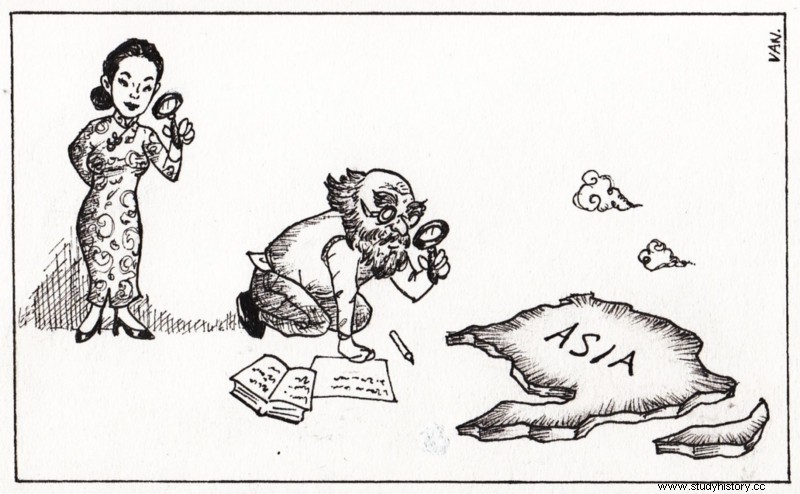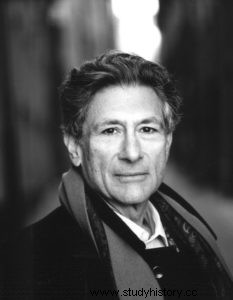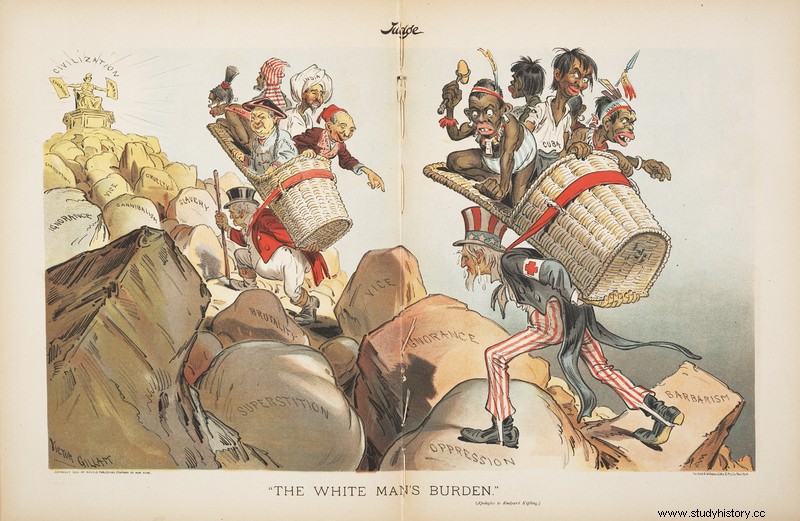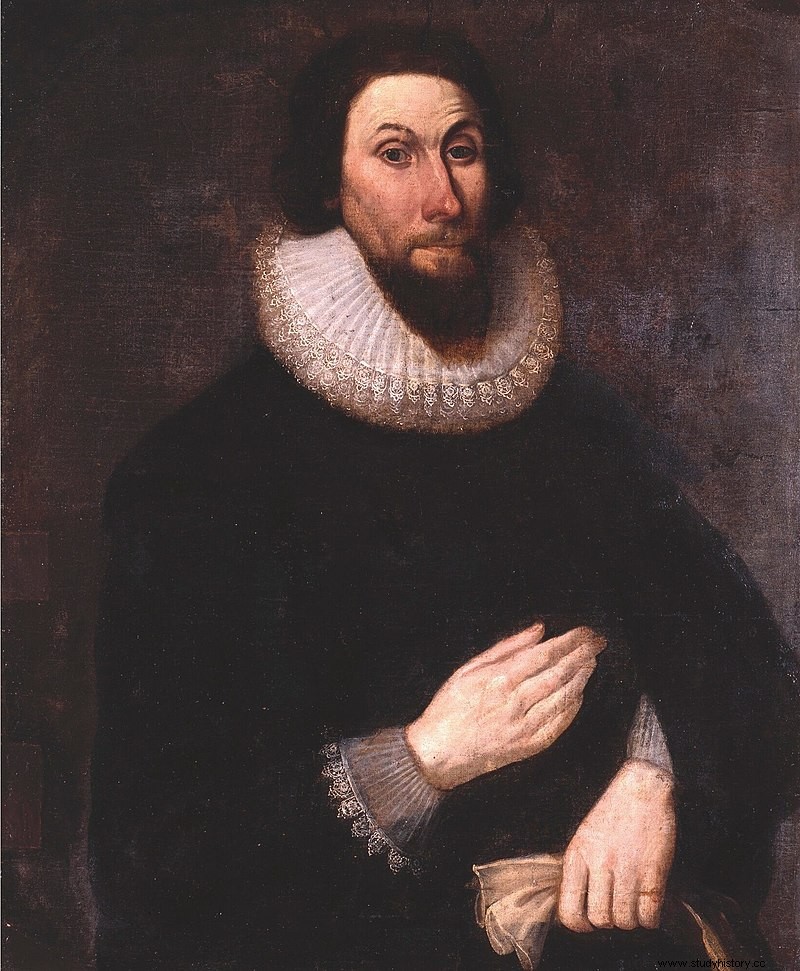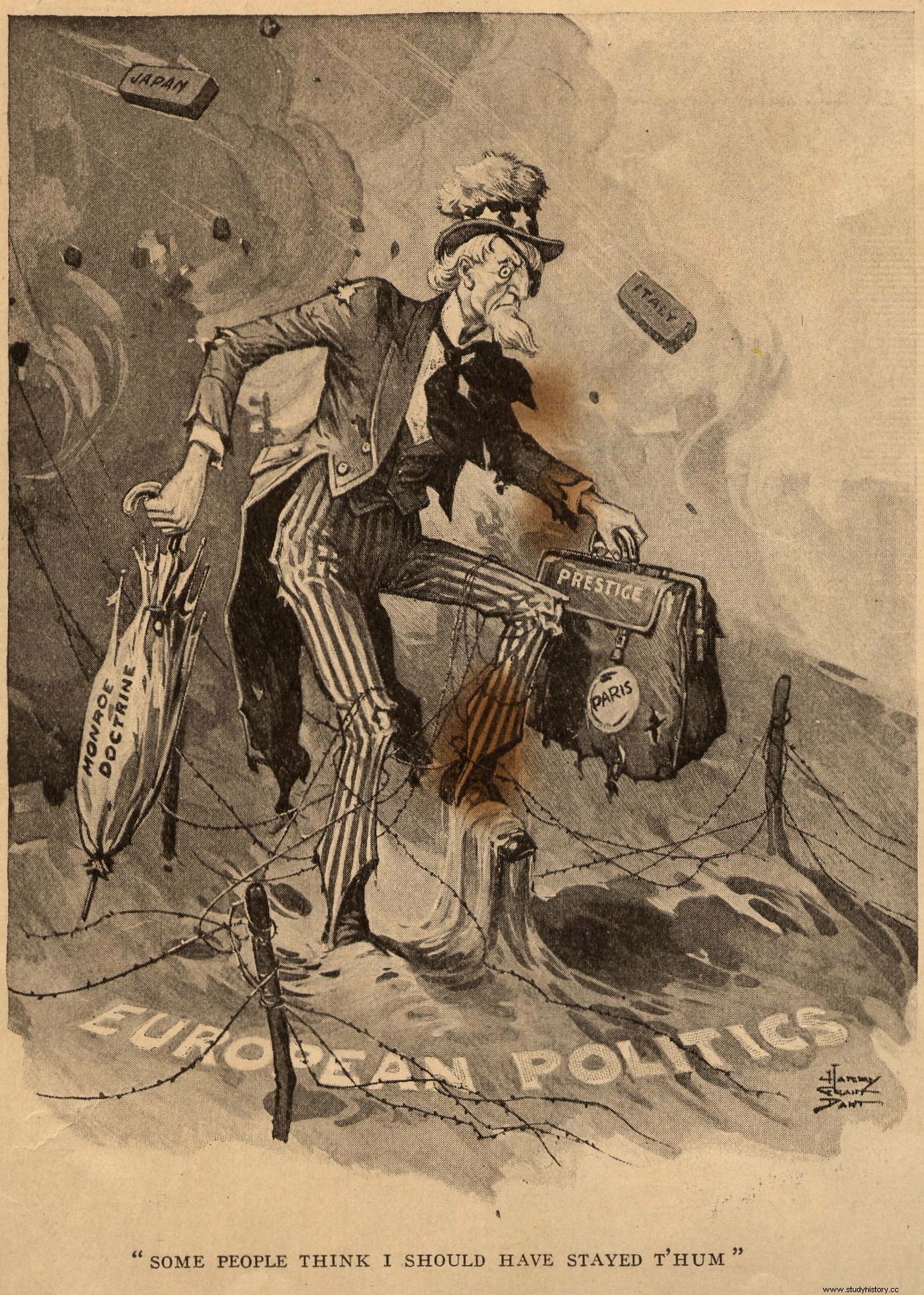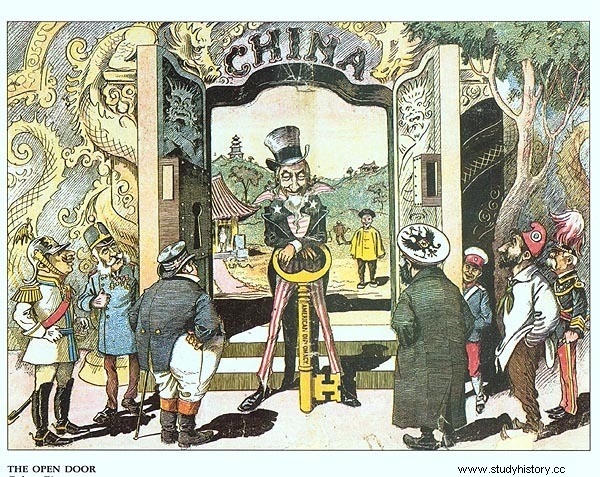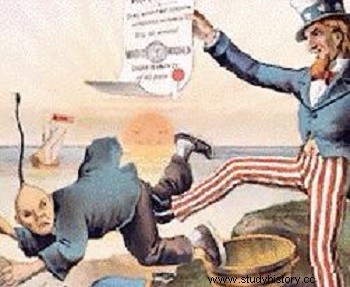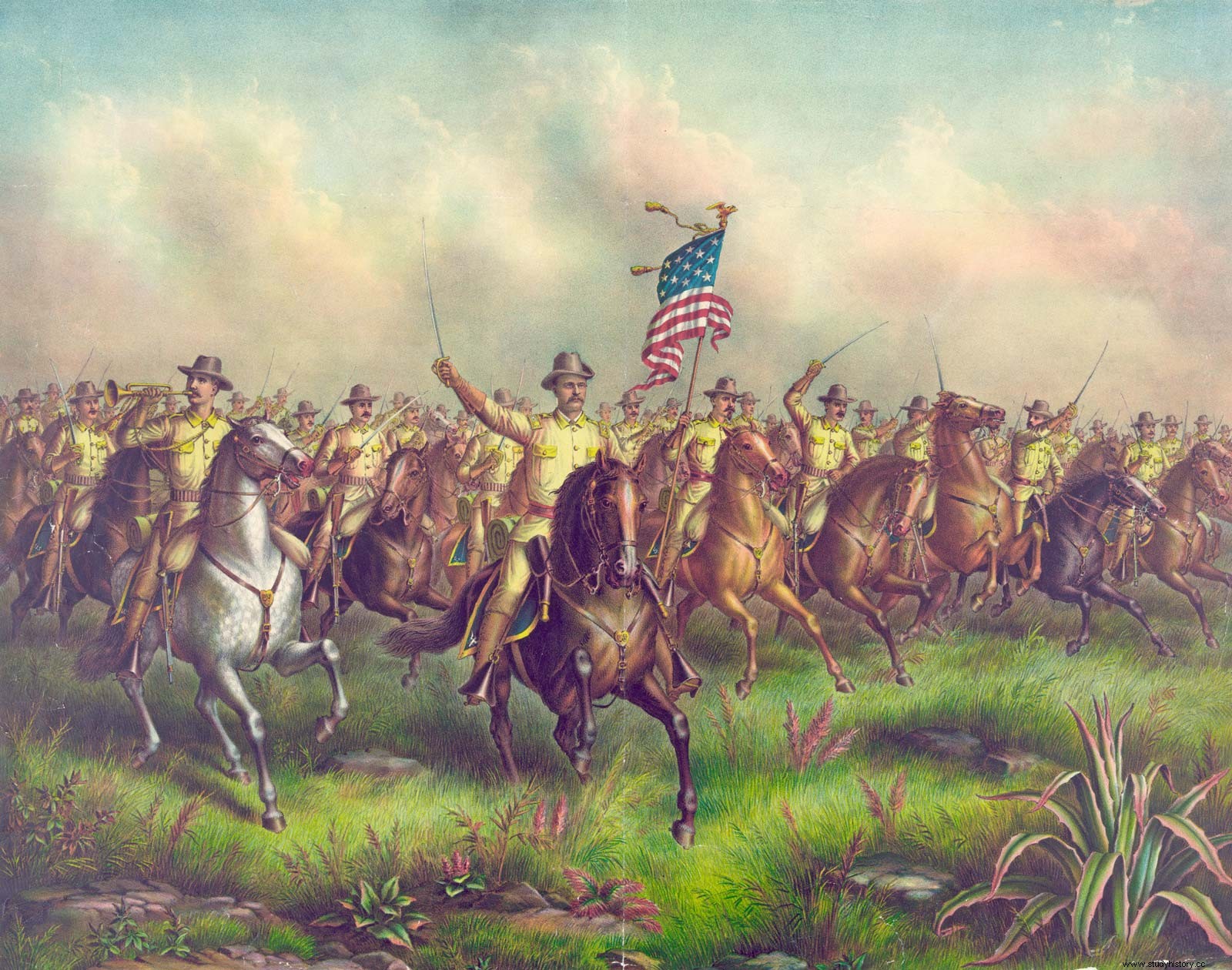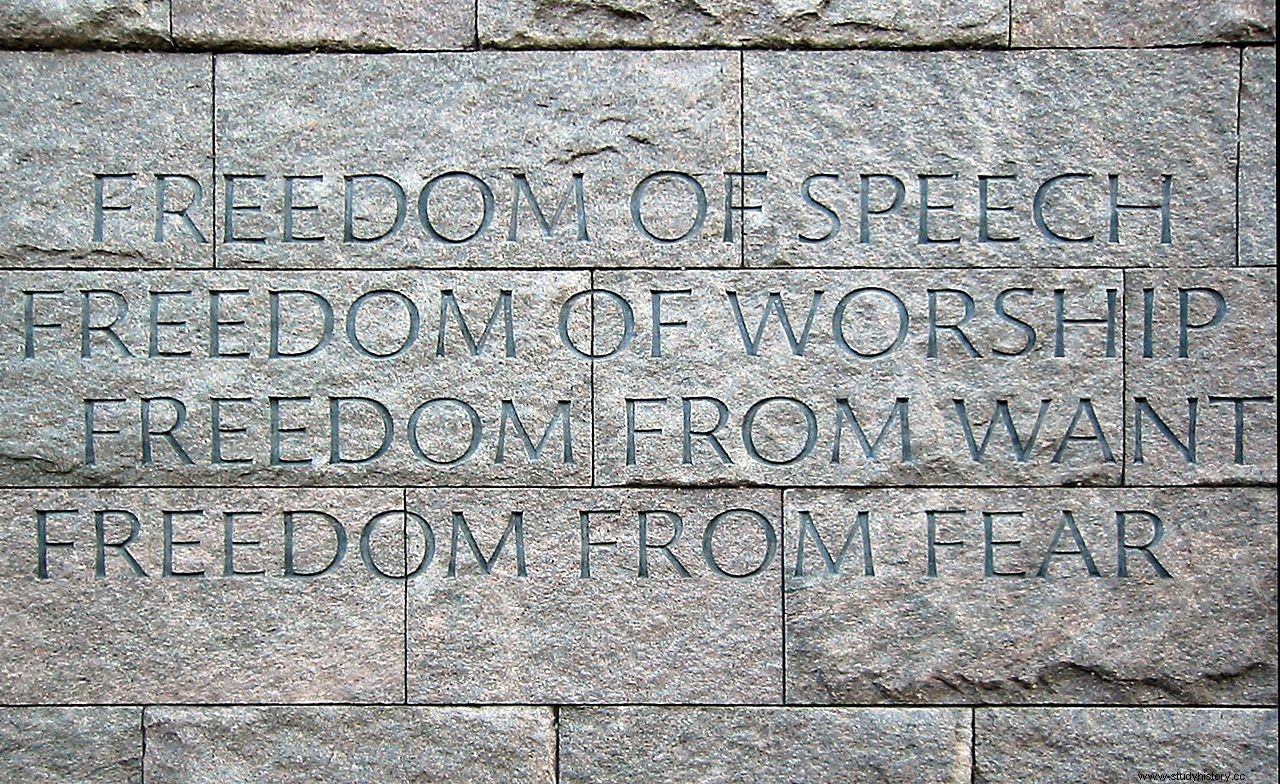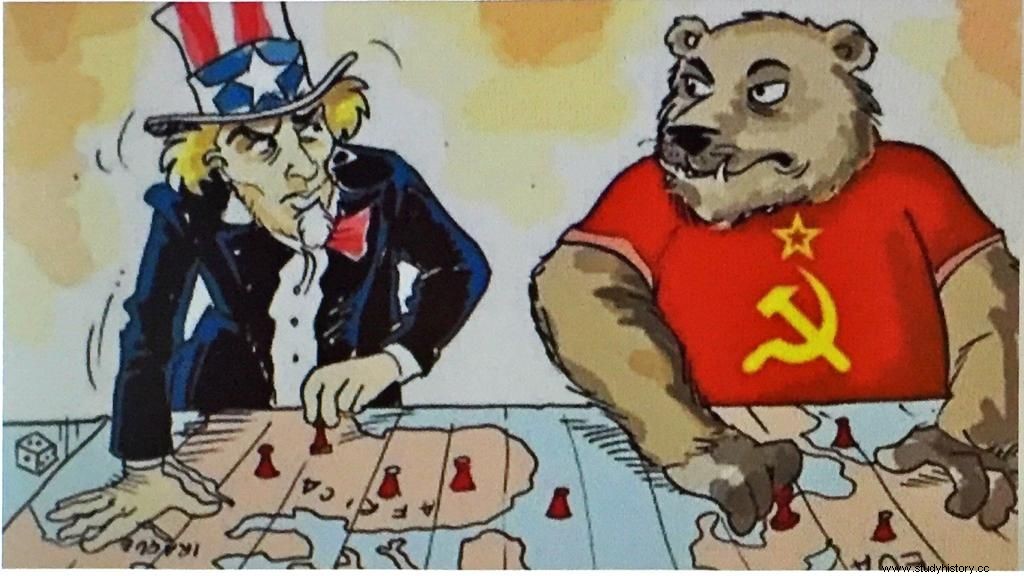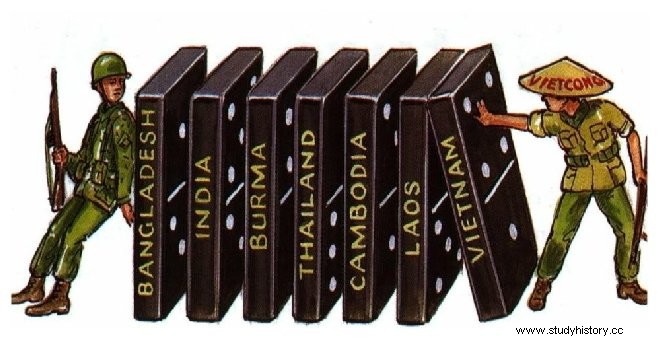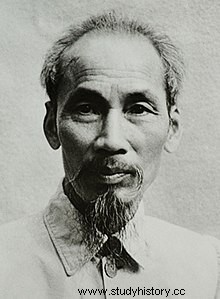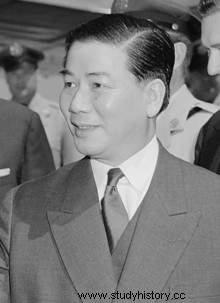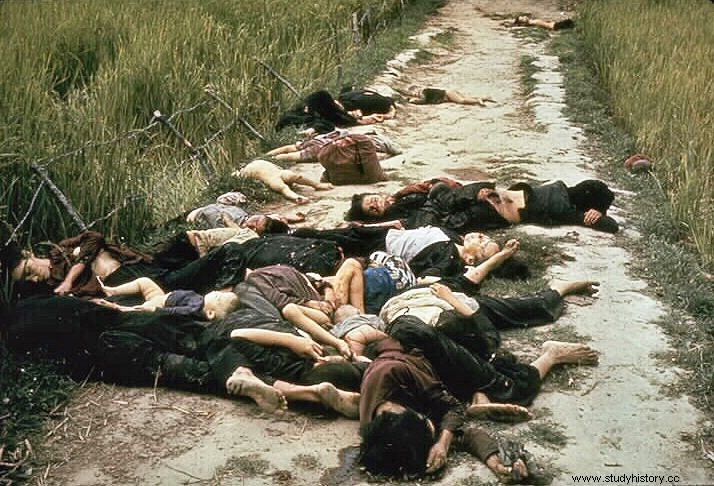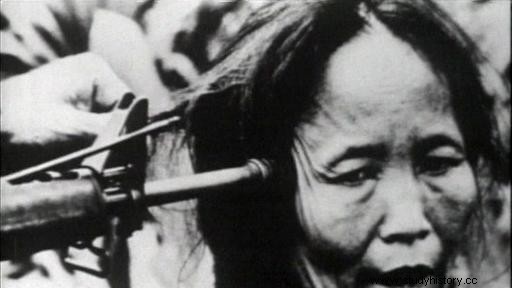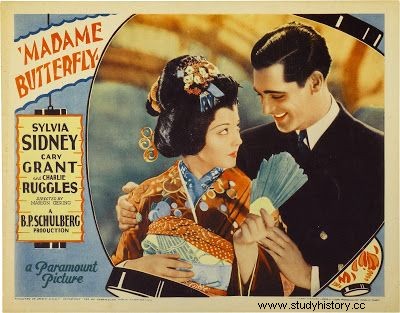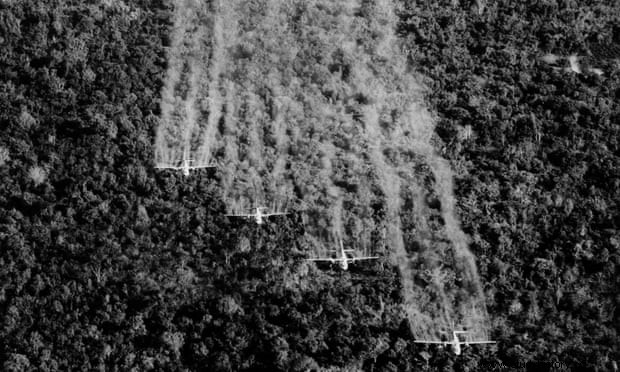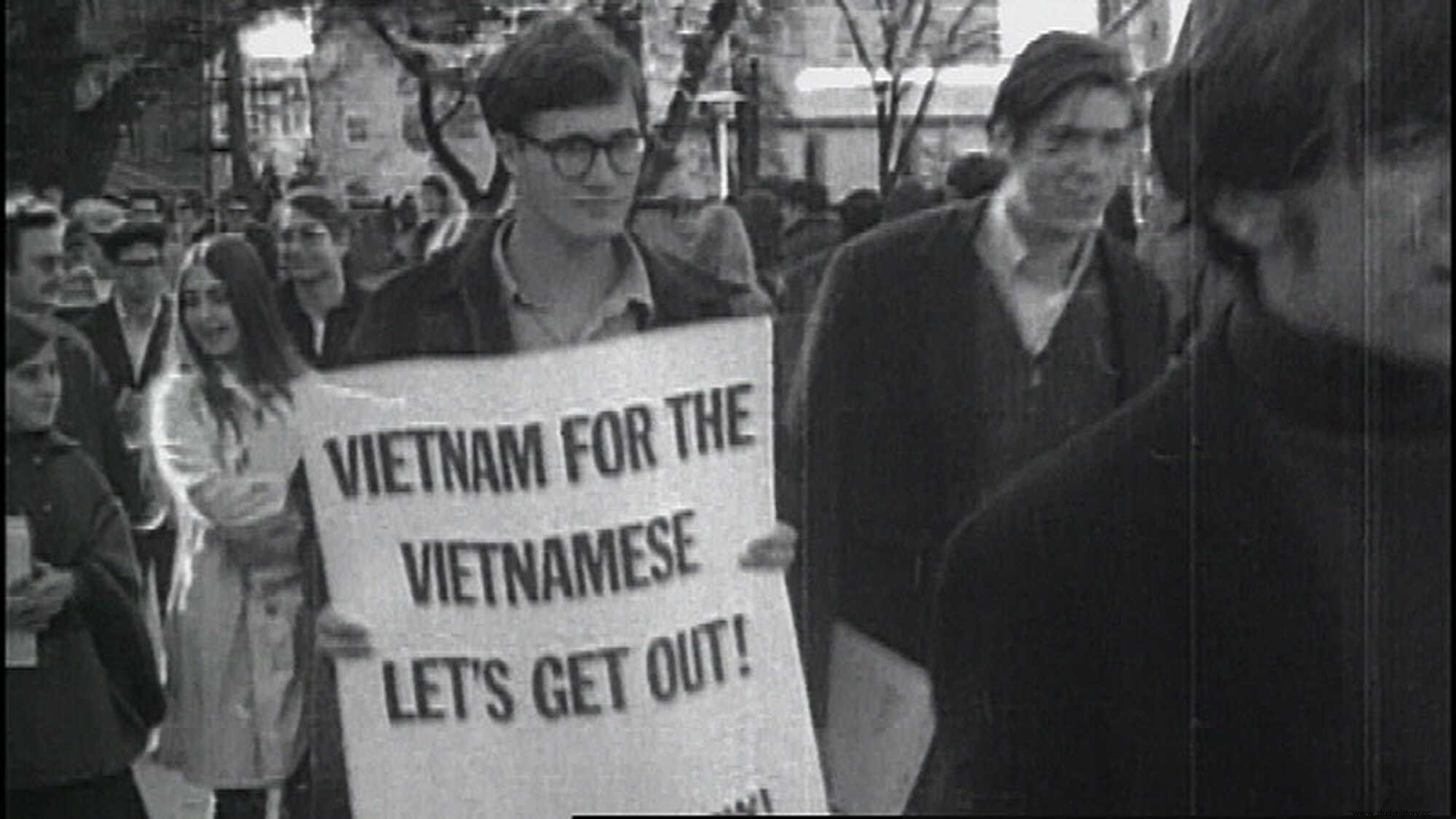The exercise of military, political and economic influence is always dependent on the "mechanisms" of "culture" [1]:a given distribution of power can in fact always be legitimized through cultural texts.
Edward Said's classical model of Orientalism based on the ideology of difference - that is, the construction of the binary logic of 'us against them' where the East is always represented "as an inferior racial other to the West" [2] - has undergone a significant transformation in the United States after the end of World War II to include the ideology of global integration.
Introduction
Since the end of World War II, the United States has taken on a new political role as a global superpower nation. This meant an immediate rejection of its intellectual tradition of isolationism, as well as a complete change in its national self-definition. [3]
However, this process was complicated by decolonization movements of Western domination in Asian countries and their subsequent inclinations toward communist regimes that "promised to facilitate freedom and restore community ties." [4]
In order to prevent their existential threat in the face of the victory of communism, the Americans were thus forced to match their appeal by restoring a sense of community with Asian countries. [5]
Therefore, during the Cold War, the United States had to balance between two Orientalist discourses:one aimed at
inclusion of communism, while the other targeted US-Asia integration.
This blog's focus on the Vietnam War, as one of the most notorious events of the Cold War, will make it possible to better illustrate and portray the heterogeneity of the orientalist discourse that since 1945 went beyond the boundaries that Edward Said imitated and even opposed. <. / P>
In fact, I would argue that unlike the Said-defined Orientalism before the Cold War, Orientalist discourse after 1945 not only enabled the United States to legitimize the beginning of the war in Vietnam and to encourage its inhabitants to continue their inhuman atrocities against North Vietnamese citizens as part of their policy of inclusion of communism, but it also encouraged the establishment of political, economic and military ties between the United States and South Vietnam as part of its policy of creating "solidarity with other people" through the United States. Asian integration.
Paradoxically, this desire of the United States to eradicate all racial prejudices and to create a multiracial community to promote this Orientalist "global notion of integration" [6] was in stark contrast to the Orientalist "Global Imagination of Inclusion" [7] which encouraged violent treatment of North Vietnamese by American GIs.
This contradiction has also driven the emergence of an anti-Vietnam war movement in the United States
Orientalism Explained
Orientalism is usually defined as a particular form of Eurocentrism (which proclaims the superiority of the West and argues that all progress made in non-European countries is solely due to the spread of European technology and ideas) used by the West in their relations with the rest of the world. This ideological tradition "assumes a clear social and cultural reality about the Orient, discovered by the efforts of the Orientalists and assumed to be" true "; it is a reality that is different from its counterpart, the West." [8]
To put it simply, Orientalism, as known by Edward Said, is an ideological element that essentially helped to legitimize American imperialism and European colonialism through the division of the world into the 'superior' West and 'subordinates' and 'need for civilization'. 'East. The Orient is presented as the alter ego of the West, its polar opposite. Thus, "through objectification, dehumanization, inferiorization, and the orientation of others, Orientalism facilitates a power relationship, dominance, and hegemony between the West and its constructed orientations." [9]
In short, Orientalism does 3 things:it dichotimizes (eg, civilized Europeans vs. barbaric Asians), essentializes, and creates hierarchies. This determination of the significance of the Orient as barbaric, cruel, irrational, and despotic (etc.) thus allows the West to intervene and sanction it on a 'moral' basis whenever it deems it necessary, as part of its 'white man's burden' of civilization missions. .
The roots of American Orientalism
American self-perception
The understanding of American Orientalism before the Cold War in the Asia-Pacific region is conditioned by
understanding of American self-perception.
The "oldest and most important myth about America" [10] describes how John Winthrop - an English Puritan - and his band of Puritan followers in 1630 traveled to the American wilderness to proclaim that "we must consider that we will be as a Citty on a Hill, the eies of all people are upon us. "[11]
Winthrop believed that he and his followers were God's chosen people sent to establish a new society - a society that would be created for the Lord, and which would thus become "a moral example for the rest of the world, a world that will probably keep its attention nailed on [them]. "[12]
These words have been internalized by many Americans and have been repeated throughout history:Americans know and believe that they have been chosen to lead the world in a moral crusade - that is, "to impose one right way on others who [are] either too evil, too stupid, or even too oppressed. ”[13]
American foreign policy before the twenty-first century
Until the end of the nineteenth century, American history was defined by "a favorable peculiar situation" [14] characterized by physical and thus cultural isolation from potential European predators, which, although they allowed them to perfect their society without costly 'disturbances' caused of wars, has also prevented them from knowing others.
This contributed to the emergence of American cultural arrogance, since "the less one knows about the world, the more terrible the local customs of the others may seem." [15]
The early American interactions with Asia prove that they used to believe that Asian traditions or beliefs differed from theirs simply because of the latter's poverty or ignorance and thus their inability to emulate American values. [16] Americans thus radiated solipsistic views, believing that "the world is populated by frustrated or potential Americans" [17] and that everyone wants to be them.
For example, before the twentieth century, American relations with other countries were characterized by informal activities, such as tourism and missionary work. In fact, while the United States sent thousands of missionaries "to bring American civilization to Asia" [18], American trade with this continent accounted for only a few percent of total trade in the United States. [19]
The majority of the missionaries were sent to China:in addition to spreading the gospel, the missionaries also carried out emergency aid, medical and educational work which, by benefiting the Chinese, enabled the establishment of a special bond between the two countries, thus helping to strengthen American commercial business opportunities in that country in the following nineteenth and twentieth centuries. [20]
When China, which became the United States 'most important trading partner, was defeated in the Sino-Japanese War of 1894-1895, Americans became concerned that Europeans' desire to establish exclusive spheres of commercial influence in China would jeopardize American economic hegemony. , the US government formulated Open Door Notes from 1899 and 1900 that sought to preserve equal commercial access to China for the United States [21]
Interestingly, while US officials tended to refer to the Open Door Policy in purely positive terms - "a US attempt to prevent China from being invaded into commercially impenetrable foreign colonies" [22] - the Chinese believed that the US was much more concerned about the maintenance of its commercial interests and was thus completely indifferent to Chinese sovereignty. [23]
In general, Americans tended to highlight only the positive features of US foreign policy toward Asia, regularly stating their useful missionary training activities, which presented it as a benign state, while concealing or ignoring its negative traits, such as exclusionary movement, discrimination and persecution of Asians in the United States
For example, in 1920 the governor of California rejected open economic competition from the Japanese using a classic Orientalist discourse on 'us against them' dichotomy:he preached that the Japanese have now monopolized many important American agricultural industries and increased their property rights by 412.9 percent because of their use of "methods that are widely separated from [American] random standards and methods, both in terms of working hours and living standards." [24] He has also rejected Japanese high fertility and expressed resentment radiated by many mothers who did not want their children to study with Japanese children. [25] At the end of the speech, he proclaimed that he was determined to do everything in his power "to keep this state for his own people" [26], since he believed that it would be impossible to assimilate Oriental Japanese, who are by definition incompatible with American Americans, in the United States [27]
These exclusionary tendencies were widespread in the United States, so in 1924 the National Origins Act, which banned all immigration from Asia, was implemented.
American Orientalism in the Asia-Pacific
The Spanish-American War of 1898 marked a turning point in American history:the Americans had acquired Pacific Islander property and were seen as a great power in the Pacific - they now turned away from isolationism and were "concerned with maintaining a kind of balancing power in the region. "[28]
The development of the American cultural dimension in the Asia-Pacific region at that time was impressive:the end of
-
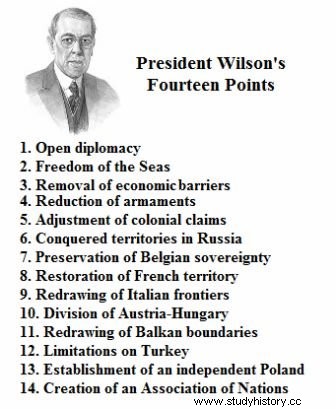
- Woodrow Wilson's fourteen points.
Credits:ResearchGate, https://www.researchgate.net/figure/Woodrow-Wilsons-Fourteen-Points_fig3_270794061
The Great War was defined in 1918 by US President Woodrow Wilson's vision presented in his Fourteen Points, which redefined the Western idealistic world.
Wilson, who himself "lived in the city on a hill" [29], radiated the idea that the United States was "the only society capable of creating social justice and true democracy at home and abroad." [30]
The maintenance of international peace was believed to be based on the integration of collective security, cultural change and economic interdependence that would promote Westernized notions of democracy and human rights [31]. This view would then emphasize that only "American universalist values and reformist ideals would be used to transform world conditions." [32]
However, the above-mentioned absence of racial equality in American domestic and foreign relations has only made Wilsonian idealist Fourteen Points look hypocritical, and thus made Japanese militarism in the region:Japanese "willingness to get Westerners out of the region was Asia's response to American and (Western)) racial injustice. ”[33]
The Japanese attack on Pearl Harbor in 1941 thus led US President Franklin D. Roosevelt to change the Wilsonian view of the 1941 Four Freedoms Speech, which, in addition to human rights and self-determination, now included social justice and racial equality. [34]
As fears of global communist 'infection' and nuclear condemnation became much stronger after World War II, the importance of maintaining the global balance of power in American political strategies significantly outweighed American "willingness to address the profound social and cultural changes taking place in China, Korea, Vietnam and elsewhere. "[35]
During the Cold War, Asia was actually presented "as a disputed terrain trapped in the struggle between the United States and the Soviet Union" [36] since it challenged American hegemony and continued peace in this part of the world.
The Soviet Union's and China's support in 1950 of the North Korean offensive against South Korea, as well as the failure of US policy in China, which led to the 1949 rise of a hostile Chinese Communist government and its alignment with the Soviet Union in the 1950 anti-US pact , urged the Americans to take the lead in 'containing' the Chinese and Soviet spread of the communist 'infection' in the Asia-Pacific. [37]
The United States therefore began to view the 'uninfected' Asian territories as "part of a global anti-Soviet coalition" [38], by investing billions of dollars and sacrificing "tens of thousands of [American] lives to maintain the" containment "scheme" [ 39] region.
The Vietnam War (1955-1975) was specifically fought for this purpose, "reflecting the advantage of strategic considerations in America's approach to Asia." [40].
American Orientalism in Vietnam
As US leadership was significantly challenged in Vietnam, when the US-backed French forces were defeated by the Chinese-backed Vietnamese Communists in 1954, the US was forced to become the main supporter of non-communist South Vietnam in order to prevent the occurrence of domino theory and the loss of its regional economic and political interests in the region. [41]
In fact, in addition to the possible Chinese regional dominance, Viet Minh leader Ho Chi Minh could possibly "become a successful model for Asian development" [42] and thus also a threat to the status quo of American regional hegemony.
The US government thus supported the South Vietnamese government in the decision to cancel the 1955 elections, which would reunite North and South Vietnam, because they knew that "if there were fair elections, Ho Chi Minh and Viet Minh would win a land victory." [ 43]
The possible defeat of the Vietnamese Communists could be an existential threat to the United States, which explains why the American Orientalist discourse at the time had taken its most radical and discriminatory turn.
Ngo Dinh Diem's administration
One of the reasons for this popularity of the North Vietnamese government is the repressive and authoritarian style of government of the South Vietnamese leader Ngo Dinh Diem. [44]
However, as an Orientalist who has only validated and supported Western values, he was widely supported by the US government, which through rigged elections has put him in power. [45]
Diem was educated in Catholic institutions, and this made him extremely biased towards the Catholic elite and intolerant of other religions, including the most popular religion in Vietnam Buddhism. [46]
For example, while the Roman Catholic Church was exempt from land reforms aimed at rural communities in Vietnam, state funds were diverted to build Catholic Catholic universities and the entire country was dedicated to the Virgin Mary in 1959, Vietnamese Buddhists had to ask for official permission from the state to publicly carry out its religious activities or even flag its religious flags. [47]
The first protests against the religious discrimination led by Vietnamese Buddhist leaders were met with fierce opposition by the state special forces:sacred sites were demolished, including the much-admired statue of Gautama Buddha, dozens of civilians were murdered, 1,400 monks arrested and various toxic chemicals were completely over the heads of government forces. of praying protesters. [48]
This even led to the establishment in South Vietnam of the Viet Cong - a popular uprising, which has also received widespread support from the Viet Minh for their fight against religious intolerance. [49]
Despite extensive US economic and military assistance in support of the South Vietnamese government, Viet Cong's strength grew only, reflecting the unpopularity of US-initiated Oriental policies.
In fact, "no amount of aid [could] have saved a corrupt and unpopular regime from collapsing." [50]
Reasons behind the US intervention in Vietnam
To prevent the seemingly inevitable result - that is, the "infection" in South Vietnam with communism - the US government chose to disregard Vietnamese rights to sovereignty and national dignity - the same values that Presidents Wilson and Roosevelt have aimed to advancing the world and conducting a full-scale military intervention in Vietnam to 'rescue' South Vietnamese from 'evil' communism. [51]
Therefore, it was the Orientalist notion of moral superiority that was widely supported by Americans that led them to intervene:their entry into Vietnam "had not been a product of a militaristic psychosis, but of a naive idealism that sought to correct the whole. world diseases and thought American goodwill gave its own effect. ”[52]
As a pretext for military intervention in Vietnam, the United States has staged a naval incident in the Gulf of Tonkin that blamed North Vietnamese accused of provoking aggression. [53]
This incident started the decade-long war in Vietnam, in which 3.8 million Vietnamese lost their lives. [54]
Since the Americans believed they were participating in "the universal struggle between freedom and slavery, lightness and darkness" [55], they sought to use more radical methods of fighting to crush the will of the 'evil and dark' Viet Minh. They turned to an exhaustion strategy that meant "doing as much damage to Vietnamese resistance forces and their supporters [and Vietnamese civilians] as possible" [56] to artificially create conditions that would force them to surrender.
Lai Massacre Min
One of the most notorious events in the history of the Vietnam War was the My Lai massacre in 1968.
As American soldiers approached the village, they killed without warning all the villagers working in the rice fields and then over 500 Vietnamese civilians living in My Lai:“men, women, young people and infants were all massacred, while many women and young girls were gang raped . "[57] All dead bodies were then maimed by American GIs.
This attack was "completely unprovoked and no shots were fired at the American soldiers." [58]
The knowledge of this particular incident is so widespread because it was published in the media, while it is clear that "massacres in My Lai were in fact extremely frequent and soldiers' behavior was far from irregular" [59] and it was even encouraged by it. US military. [60]
Therefore, the My Lai massacre was merely "a microcosm of a broader phenomenon present through Western military intervention in the country and in the region." [61]
The role of Orientalism in the legalization of violence
However, these events were also an indication of the way American GIs behaved.
So, what has encouraged American soldiers to act the way they did?
Of course, the Orientalist discussion of dehumanization played a major role in this legitimation and encouragement of the continuation of heinous crimes committed by American GIs against Vietnamese.
Tropical Asia was always presented by the West as a place for European pornographic fantasies, "with cruel descriptions of sexual license, promiscuity, gynecological aberrations, and general perversion that mark the colonized differently for metropolitan consumption." [62] In fact, Indochina was always seen by it. ' morally superior 'The West as a "place of decadence and degradation that cultivated an amoral or immoral society." is on leave to rest in order to "avoid the East's corruption of the West's soldiers." [64]
Saigon was also often portrayed as a feminine place "in need of guidance" [65] from the 'morally advanced' and civilized West. At the end of the war, however, due to the fact that the United States was defeated by the Viet Minh, which forced it to withdraw from the country, Saigon was compared to a prostitute- "a dying place, but she dies like a whore as desperate trying to reverse his last trick. ”[66]
Probably the cruelty of US actions can be explained by the fact that the US military prescribed drugs "to help soldiers deal with such pressure in the midst of flagging morality" [67], as 28 percent of US GIs in Vietnam took hard drugs, e.g. heroin or amphetamine [68] However, the orientalist discourse on dehumanization has played the most important role in facilitating violence.
In fact, the infamous 'More Gook Rule', widely used by American soldiers, proclaimed that "it was not a crime to kill or torture or rob or maim a Vietnamese because he was just a fool." [69] American soldiers were not allowed to call them Vietnamese and was instead encouraged to label them as "goats, dolls, slopes, slopes- all to take from their humanity, all to make it easier to kill them." [70] Therefore, no Vietnamese people considered as human beings, and this encouraged the Americans to act in an inhuman way themselves. [71]
It is therefore not surprising why doped Americans who viewed Vietnamese as subhumans saw no problem in participating in "competitions" to "get the highest body numbers" [72] for prizes such as extra beer or a day off.
These conditions have thus encouraged not only to kill Vietnamese, but also to torture them. For example, Vietnamese women were often "raped using bottles and rifles" [73]; There were many reports from American GIs that "could rape the women, scatter them and drive sharp sticks or bayonets into the vagina." [74]
However, the infamous use of chemical weapons would make Vietnam cut for generations.
During the Vietnam War, under the Operation Ranch Hand program, "about 75 million gallons of chemical herbicides and defoliants" [75] were used, destroying over 30 million acres of farmland. [76] Chemicals were used to destroy the livelihoods of rural populations in order to deprive North Vietnamese soldiers of their support base. [77]
One of the offshoots, Agent Orange, contained TCDD, which is "the most toxic form of dioxin that has been shown to cause cancer among other serious diseases." [78] some effect on humans, many American scientists confirmed that the United States knew how dangerous TCDD was, but since “the material was to be used on the enemy, none of [the Americans] were overly concerned. ”[79]
Therefore, the use of Agent Orange in Vietnam, which is responsible for significant environmental pollution, genetic diseases and mutations that are passed on from several generations of those who were exposed to it, was another tragic result stemming from the Orientalist discussion of dehumanization.
The heterogeneity of Orientalism:the policy of international integration
However, it is important to understand that "Orientalism is a heterogeneous rather than a monolithic discourse, and that it takes several and often conflicting forms" [80] depending on the situation.
In fact, in addition to the Orientalist discourse on dehumanization, there is evidence that the United States has in fact insisted on bridging the gap between non-communist Asian countries using the international integration method that should be considered an equally integral part of the Orientalist discourse. .
US government officials believed that the main American problem was due to its excess of individualism and lack of commitment. [81] It was believed that the United States could lose the Cold War in Asia due to the fact that the Soviet Union with its "banner of racial equality" [82] looked "more attractive" in the eyes of Asian decolonization countries that could have finally chosen to follow. communism. [83] Therefore, when a Soviet statesman Khrushchev sent support for independence movements in Asia, the Americans were required to also demonstrate "a deep and effective concern for racial inequalities" [84] both at home and abroad to prevent the decolonizing world from turning around. against the Soviet Union. [85]
ThePeople-to-People Program
The establishment of the People-to-People program marked one of the efforts of US President Eisenhower's administration "to cultivate public support for foreign aid programs and Cold War internationalism in general." [86]
It promoted both foreign and domestic education programs.
Abroad, it encouraged cross-border intellectual relations through the spread of American values, culture and ideas to other countries to promote closer positive contact between Americans and foreigners, which encouraged positive perceptions of the United States and thus helped counter Soviet propaganda. [87]
The home aims to instruct Americans on how to behave abroad to prevent negative perceptions of the United States from appearing abroad, as well as to encourage Americans to "feel personally involved in the task of international integration." [88]
Thus, the People-to-People program helped to establish the global notion of integration "by insisting that great differences between people could be overcome relatively easily." [89] Sympathy means "the ability to feel what another feels , sharing their relationships and experiences "[90] - became crucial to forging American globalism.
Therefore, in contrast to domestic inclusion policies, the People-to-People program encouraged Americans to replace negative social practices, including "naming names" [91] and discriminating against others, and to learn about other cultures and traditions. P> The
Paradox
However, this program failed to secure overwhelming public support, as its sentimental integration and the notion of racial tolerance it promoted have run counter to reality. [92]
The war in Vietnam was one of the first TV-armed conflicts, which led the fighting directly into American living rooms. In addition to the sharp increase in US casualties and military conscription that has increased public disagreement, the broadcast of the 1965 Rolling Thunder bombing campaign against North Vietnam, as well as the inhuman treatment of Vietnamese, is in stark contrast to American Orientalist discourse on international integration. and sympathetic understanding of the differences of the other, thus leading to the establishment of the war movement against Vietnam. [93]
Most anti-war demonstrations followed non-exclusive policies and received widespread support from civil rights activists, such as Martin Luther King Jr. and Muhammad Ali. [94]
It is also interesting how this understanding of Andre's differences and sympathy with individual struggles, stemming from Orientalist discourse on international integration, has contributed to a drastic shift in American perception of war:since the 1970s, wars have been portrayed “in terms of personal experiences. of American participants instead of impersonal and nationalistic. "[95]
the conclusion
Heterogeniteten til den orientalistiske diskursen som oppstod under den kalde krigen har spilt en meget viktig rolle både i å legitimere og oppmuntre til umenneskelig behandling av den andre så vel som til å bygge bro mellom forskjellene mellom dem og amerikanerne.
I stedet for å hjelpe USA til å føre krigen mot kommunismen, har den imidlertid bare undergravd innsatsen, ettersom to orientalistiske diskurser motsier hverandre. Denne motsetningen har dermed drevet fram en antikrigsbevegelse i hele landet, så vel som en dyp mistillit til regjeringen.
For å lese andre relaterte artikler, besøk:
Politisk antropologi:Russisk imperialisme og krigen i Ukraina (åpnes i en ny nettleserfan)
The Rise of Populism in Europe:A Case Study of Hungary and Romania (Åpnes i en ny nettleserfan)
Bibliografie
- Abrams, AB "Vietnams tretti års krig." In Power and Primacy:The History of Western Intervention in the Asia-Pacific, 171–205. Peter Lang, 2019.
- Baritz, Loren. "Guds land og amerikansk kunnskap." I The American Experience in Vietnam, redigert av Grace Sevy, 5–16. University of Oklahoma Press, 1989.
- Hall, Mitchell K. "The Vietnam Era Antiwar Movement." OAH Magazine of History 18, nr. 5 (oktober 2004):13–17. https://www-jstor-org.
- Keith, Jeffrey A. "Produserer 'Miss Saigon':Imaginings, Realities and the Sensual Geography of Saigon." Journal of American-East Asian Relations 22 (2015):243–72. https://www-jstor-org.
- Klein, Christina. "Introduksjon." I kald krig Orientalisme:Asia in the Middlebrow Imagination, 1945-1961, 1–17. University of California Press, 2003.
- Klein, Christina. "Sentimental utdanning:skape et globalt fantasi om integrasjon." I kald krig Orientalisme:Asia in the Middlebrow Imagination, 1945-1961, 19–60. University of California Press, 2003.
- Lachmann, Richard og Lacy Mitchell. "Krigens skiftende ansikt i lærebøker:skildringer av andre verdenskrig og Vietnam, 1970-2009." Utdanningssosiologi 87, nr. 3 (juli 2014):188–203. https://search-proquest-com.
- Saghaye-Biria, Hakimeh. "Avkolonisering av det 'universelle' menneskerettighetsregimet:spørsmålstegn ved amerikansk eksepsjonalisme og orientalisme." ReOrient 4, nr. 1 (2018):59–77.
- Sutter, Robert G. "Historiske leksjoner og utviklingen av amerikanske forbindelser med Asia-Stillehavet." I USA i Asia, 1–37. Rowman og Littlefield Publishers, Inc., 2009.
- "Guvernøren i California forteller om det 'japanske problemet', 1920." I store problemer i amerikansk historie siden 1865 2, 4, 189-190. Cengage Learning, 2015.
- Wilson, Woodrow. 8. januar 1918. "President Woodrow Wilsons fjorten poeng". https://avalon.law.yale.edu.
- Winthrop, John. 1630. “By på en høyde”. https://www.mtholyoke.edu/acad/intrel/winthrop.htm.
Merknader:
[1] Christina Klein, kald krig orientalisme:Asia in the Middlebrow Imagination, 1945-1961 (University of California Press, 2003), 6.
[2] Klein, Ibid, 11.
[3] Klein, Ibid, 9.
[4] Klein, Ibid, 42.
[5] Klein, Ibid, 43.
[6] Klein, Ibid, 23.
[7] Ibid.
[8] Hakimeh Saghaye-Biria, "Avkolonisering av det 'universelle' menneskerettighetsregimet:spørsmålstegn ved amerikansk eksepsjonalisme og orientalisme," ReOrient 4, nr. 1 (2018):s. 59-77, 64.
[9] Ibid.
[10] Loren Baritz, "Guds land og amerikansk kunnskap", i The American Experience in Vietnam, red. Grace Sevy (University of Oklahoma Press, 1989), s. 5-16, 5.
[11] John Winthrop, 1630. "City on a Hill", https://www.mtholyoke.edu.
[12] Baritz, Ibid, 6.
[13] Ibid.
[14] Baritz, Ibid, 7.
[15] Baritz, Ibid, 10.
[16] Baritz, Ibid, 11.
[17] Baritz, Ibid, 10.
[18] Robert G. Sutter, "Historical Lessons and the Evolution of US Relations with the Asia-Pacific", i USA i Asia (Rowman og Littlefield Publishers, Inc., 2009), s. 1-37, 5.
[19] Ibid.
[20] Sutter, Ibid, 6.
[21] Sutter, Ibid, 7.
[22] Sutter, Ibid, 8.
[23] Ibid.
[24] "Guvernøren i California forteller om det 'japanske problemet', 1920," i store problemer i amerikansk historie siden 1865 2, 4. utg., 189-190. Cengage Learning, 2015, 189.
[25] Ibid.
[26] Ibid.
[27] "Guvernøren i California forteller om det 'japanske problemet', 1920", Ibid, 190.
[28] Sutter, Ibid, 9.
[29] Baritz, Ibid, 12.
[30] Baritz, Ibid, 15.
[31] Woodrow Wilson, 8. januar 1918. "President Woodrow Wilsons fjorten poeng", https://avalon.law.yale.edu.
[32] Sutter, Ibid, 10.
[33] Sutter, Ibid, 11.
[34] Ibid.
[35] Sutter, Ibid, 13.
[36] Klein, Ibid, 10.
[37] Sutter, Ibid, 3.
[38] Sutter, Ibid, 13.
[39] Ibid.
[40] Ibid.
[41] Sutter, Ibid, 3.
[42] AB Abrams, "Vietnams Thirty Years of War", i Power and Primacy:The History of Western Intervention in the Asia-Pacific (Peter Lang, 2019), s. 171-200, 176.
[43] Abrams, Ibid, 178.
[44] Ibid.
[45] Ibid.
[46] Ibid.
[47] Abrams, Ibid, 179.
[48] Ibid.
[49] Ibid.
[50] Abrams, Ibid, 180.
[51] Ibid.
[52] Baritz, Ibid, 14.
[53] Abrams, Ibid, 180.
[54] Ibid.
[55] Baritz, Ibid, 15.
[56] Abrams, Ibid, 180.
[57] Abrams, Ibid, 181.
[58] Ibid.
[59] Abrams, Ibid, 183.
[60] Ibid.
[61] Abrams, Ibid, 186.
[62] Jeffrey A. Keith, "Producing 'Miss Saigon':Imaginings, Realities, and the Sensual Geography of Saigon," Journal of American-East Asian Relations 22 (2015):s. 243-272, https://www-jstor-org, 249.
[63] Keith, Ibid, 250.
[64] Keith, Ibid, 263.
[65] Keith, Ibid, 249.
[66] Keith, Ibid, 267.
[67] Abrams, Ibid, 187.
[68] Abrams, Ibid, 186.
[69] Abrams, Ibid, 188.
[70] Abrams, Ibid, 190.
[71] Abrams, Ibid, 188.
[72] Ibid.
[73] Abrams, Ibid, 190.
[74] Abrams, Ibid, 191.
[75] Abrams, Ibid, 192.
[76] Ibid.
[77] Ibid.
[78] Abrams, Ibid, 195.
[79] Abrams, Ibid, 196.
[80] Klein, Ibid, 15.
[81] Klein, Ibid, 42.
[82] Klein, Ibid, 43.
[83] Ibid.
[84] Ibid.
[85] Klein, Ibid, 44.
[86] Klein, Ibid, 49.
[87] Klein, Ibid, 50.
[88] Klein, Ibid, 51.
[89] Klein, Ibid, 52.
[90] Klein, Ibid, 53.
[91] Klein, Ibid, 55.
[92] Klein, Ibid, 57.
[93] Mitchell K. Hall, "The Vietnam Era Antiwar Movement", OAH Magazine of History 18, nr. 5 (oktober 2004):s. 13-17, https://www-jstor-org, 14.
[94] Ibid.
[95] Richard Lachmann og Lacy Mitchell, "The Changing Face of War in Textbooks:skildringer av andre verdenskrig og Vietnam, 1970-2009," Sociology of Education 87, nr. 3 (juli 2014):s. 188-203, https://search-proquest-com, 200.

